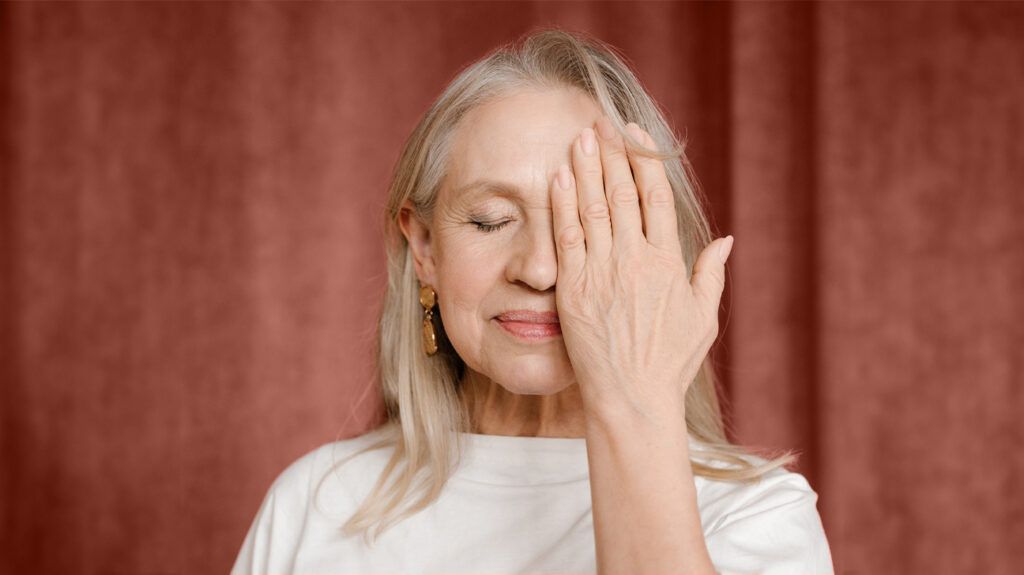Common vision problems in older adults include AMD, cataracts, glaucoma, dry eye, and diabetic retinopathy. Regular eye tests can help people detect eye conditions early and protect their vision.
The risk of eye problems and vision loss increases with age. Vision problems can make reading small type, seeing at night, and telling objects apart from the background more difficult. It may also take longer to see different colors and adjust to changes in light.
Many of these vision problems are manageable with improved lighting, prescription eyewear, and contact lenses. However, the risk of certain eye diseases increases with age, and some can cause severe vision loss.

Eye changes over time make vision problems more likely in older adults. According to a 2023 study, more than
Symptoms of some eye conditions
The effects of other long-term conditions and treatments on the eyes can also increase the risk. According to the American Optometric Association (AOA), people with diabetes or high blood pressure and those who take medications that can affect the eyes are at a higher risk of eye problems.
This condition causes
AMD is a
- seeing faces
- reading
- driving
- performing close-up work
The most common type is dry AMD, which develops over several years.
In 2023, two drugs — pegcetacoplan and avacincaptad pegol — received approval for treating a type of dry AMD. Vitamins known as AREDS2 may also help with this type.
Treatment is also available for the more severe type that progresses more rapidly, known as wet AMD. Current options
Learn more about wet vs. dry AMD.
Cataracts are cloudy areas in the lens of the eye, which helps control how light enters the eye. Most cataracts develop due to typical changes in the eye that occur as a person gets older. Proteins in the lens of the eye start to break down and clump together. This causes the lens to become hazy or cloudy, affecting vision.
These changes to the eye often start in the 40s or 50s. In the United States,
A cataract is often not noticeable at first but may lead to blurred, hazy vision with duller colors. While it can affect a person’s ability to perform daily activities, a cataract is completely reversible with a surgical procedure called phacoemulsification. However, without treatment, cataracts may lead to vision loss.
This is a group of eye diseases that damage the optic nerve, which is responsible for feeding information from the eye to the brain. Commonly, glaucoma does not cause pain but can lead to a loss of vision at the side of the visual field. Without treatment, glaucoma may cause blindness.
Being over 60 years of age may be a risk factor for glaucoma. For example, a
Dry eye causes fewer or lower-quality tears to spread across the cornea (front layer of the eye) with every blink.
As tears usually provide lubrication, protect the eye from infections, and keep the eye clean from foreign substances, this can lead to:
- blurred vision
- stinging
- redness
- grittiness
- light sensitivity
- eyes that leak too much water or produce stringy mucus
The eye naturally dries as part of aging, and according to the AOA, being over 65 is a key risk factor for dry eye. Eye drops to add or conserve tears help treat inflammation.
Diabetic retinopathy is the
Age-related changes in the retina, including thinning and less blood flow, can increase the risk of damage to the blood vessels in this part of the eye.
This condition may not cause symptoms at first but
Regular eye exams from an optometrist or ophthalmologist are the best way to protect the eyes during aging. Many of these conditions do not cause early symptoms and may be more difficult to treat later. A person should receive a dilated eye exam
During an exam, an eye doctor applies drops that widen the pupils, which allows a better view of the eye. Checking the prescription of any eyewear or contact lenses is also crucial for offsetting any small changes in sight, as these can increase an older adult’s risk of falls and accidents.
Consultation with a physician to check for health conditions such as high blood pressure or diabetes that can affect eye health may also reduce the risk of serious eye disease later in life.
Some conditions, such as cataracts and dry eye, naturally result from aging. However, people can improve their eye health during aging and help reduce their risk of eye disease in the
- Eating a
well-balanced diet full of leafy greens, such as spinach, kale, and collard greens, as well as salmon, tuna, and halibut. - Exercising often to manage body weight and reduce the risk of diabetes and its complications.
- Avoiding or quitting smoking.
- Wearing eye protection in sunlight, such as UV-blocking sunglasses.
- Monitoring and managing blood pressure and diabetes.
- Taking a break during extended computer use every 20 minutes to look at an object around 20 feet away for 20 seconds.
As a person ages, their risk of eye problems such as age-related macular degeneration, cataracts, glaucoma, and diabetic retinopathy increases.
Some of these — including cataracts and dry eye — directly result from aging. Others result from complications of other diseases, including diabetes, that develop over time. Regular checkups and an eye-healthy lifestyle can help reduce the risk of these conditions in older adults.
